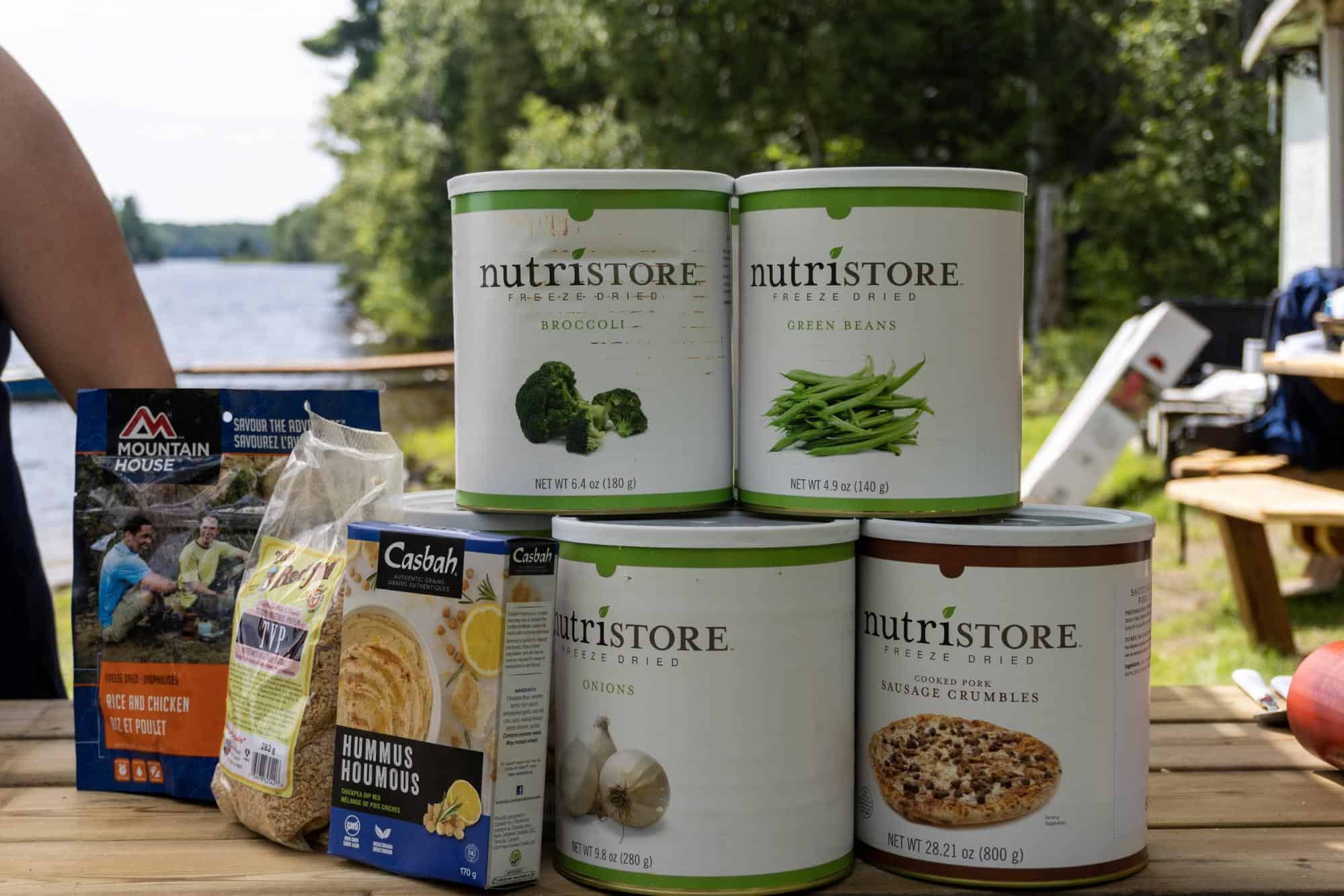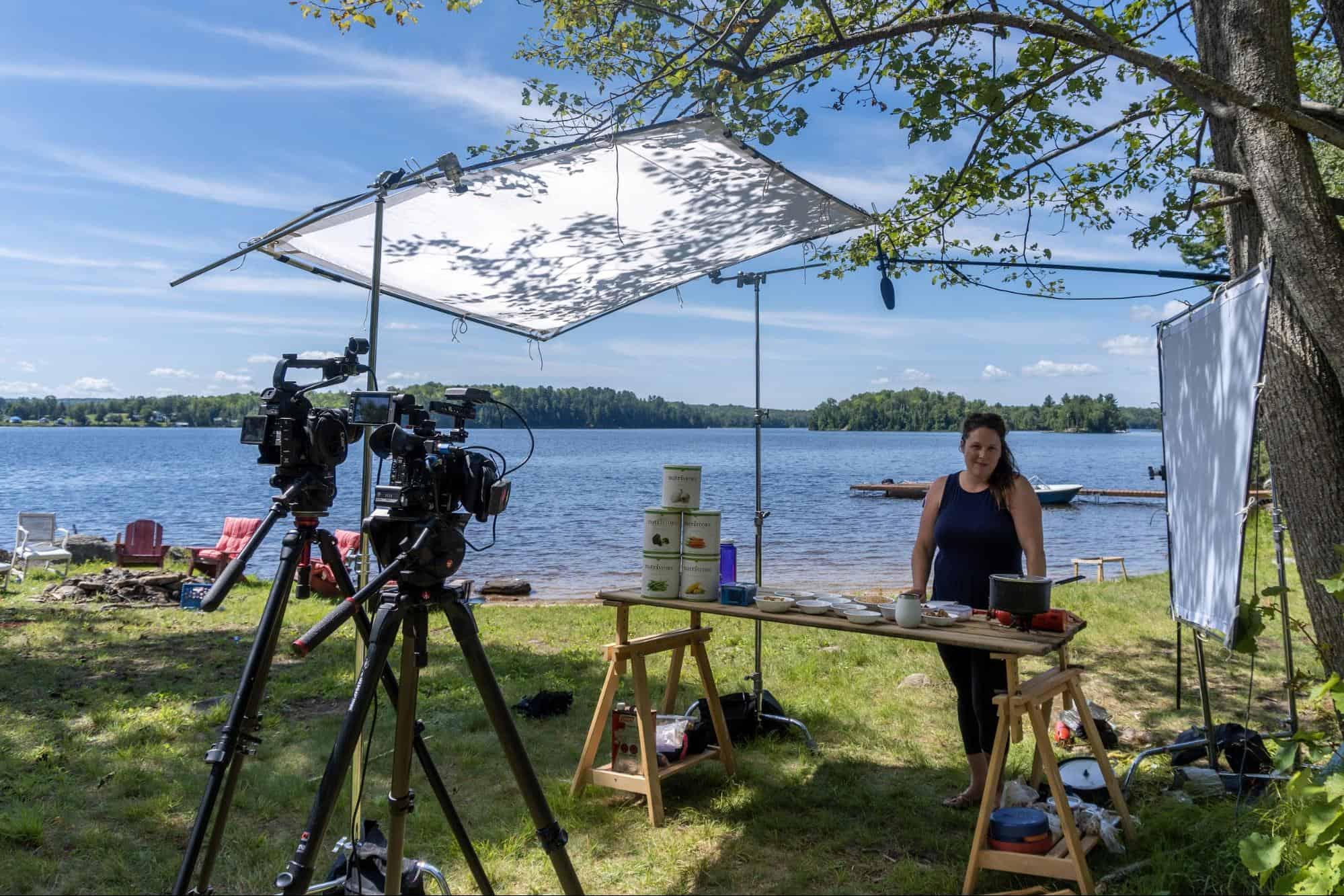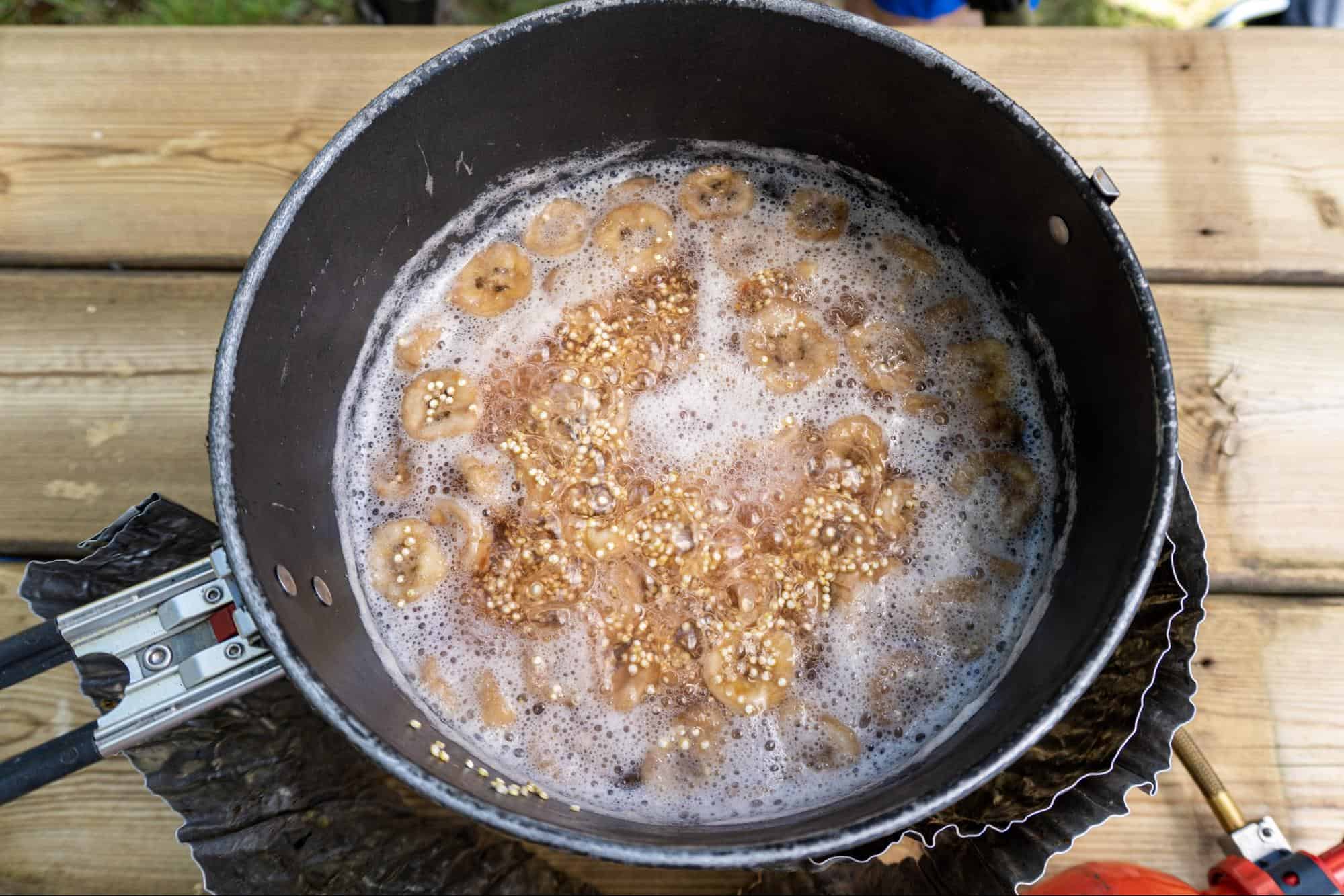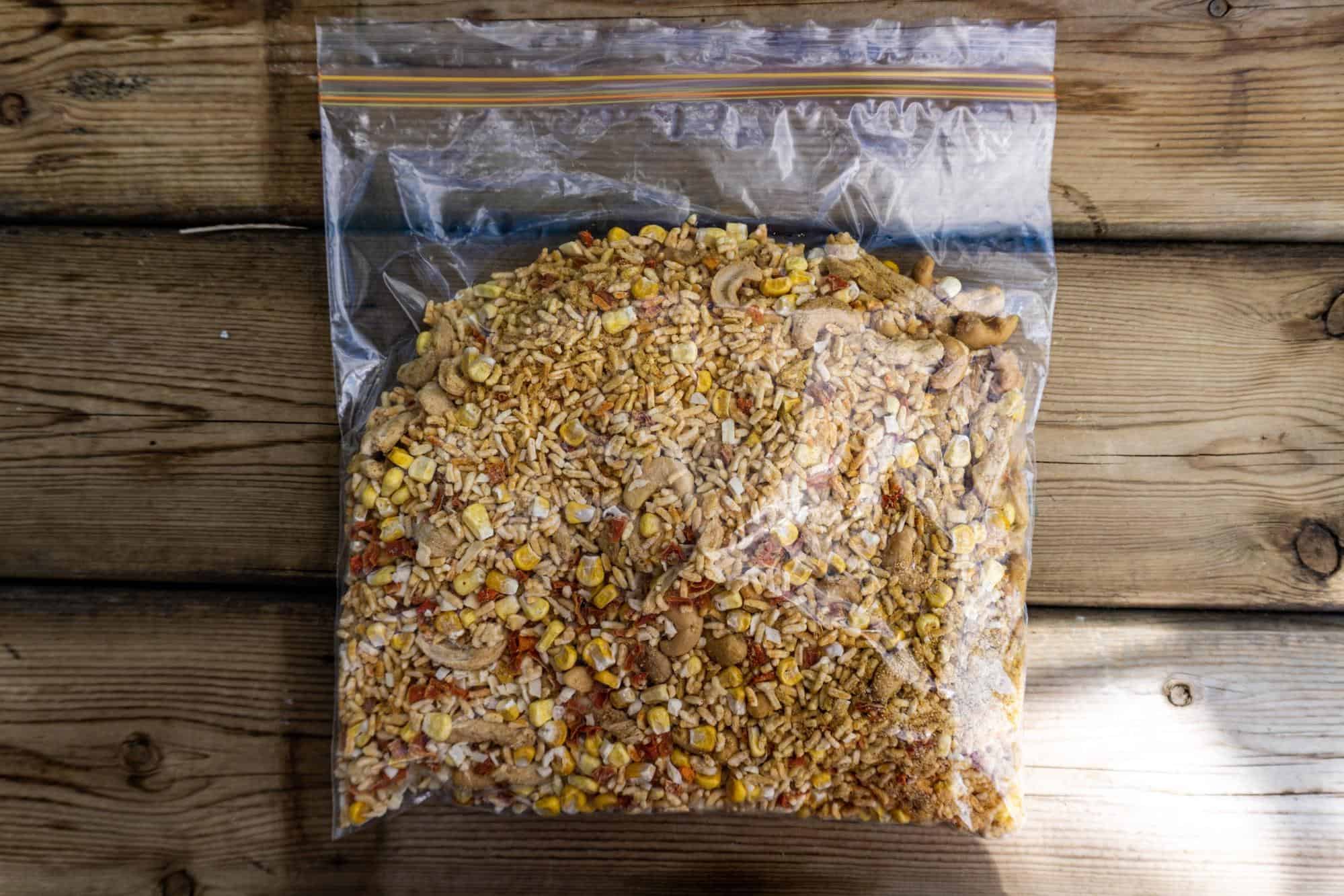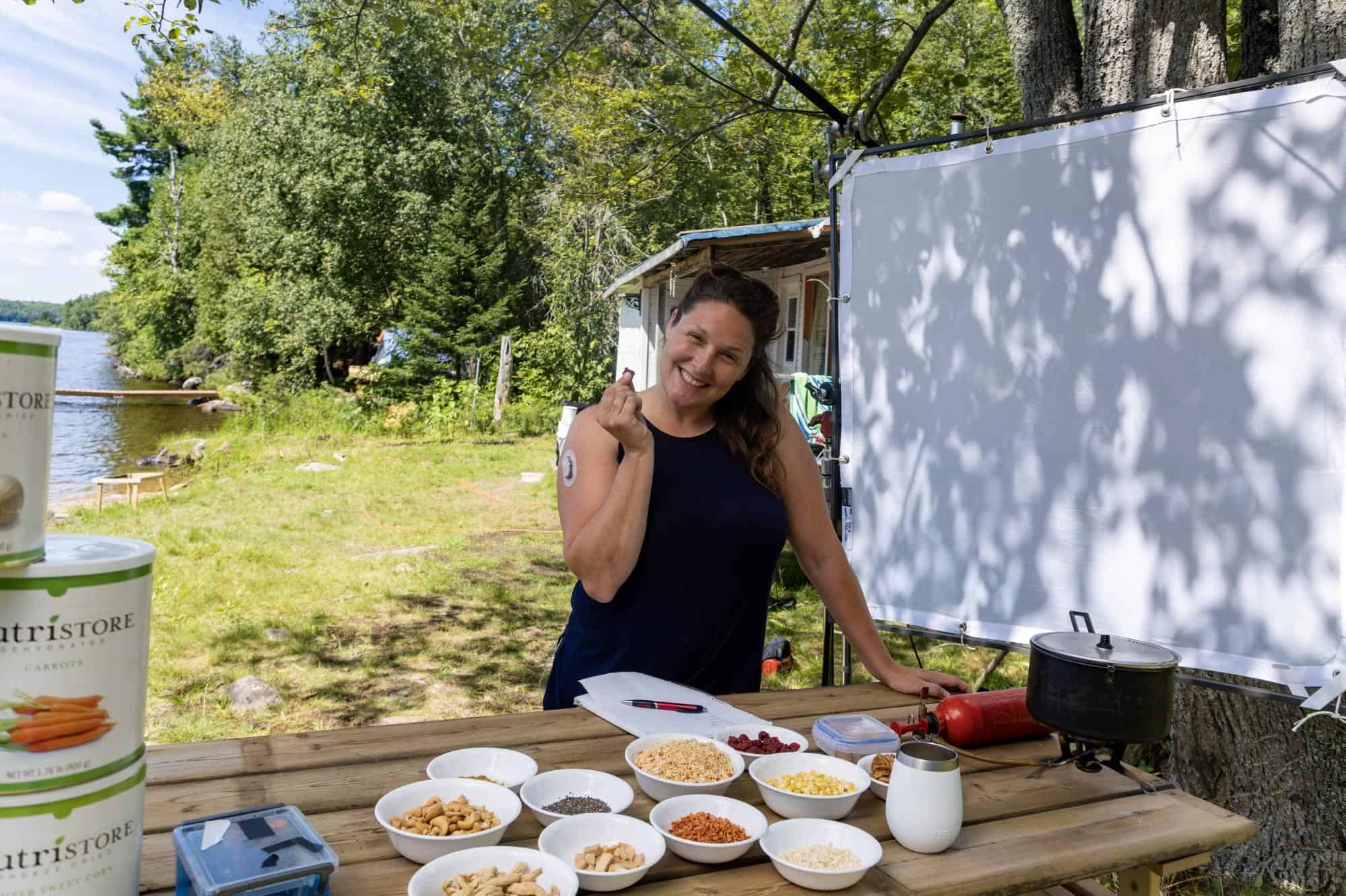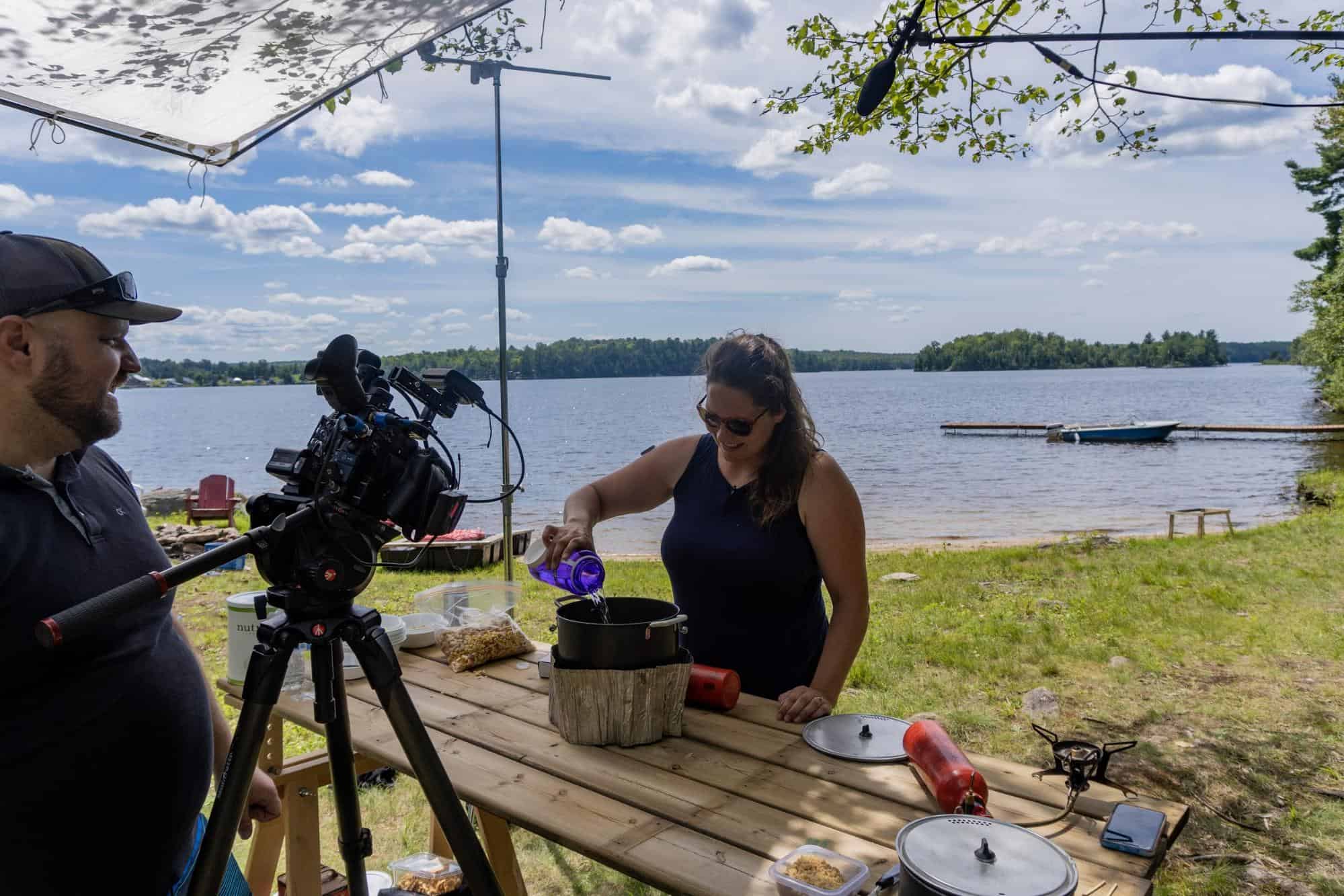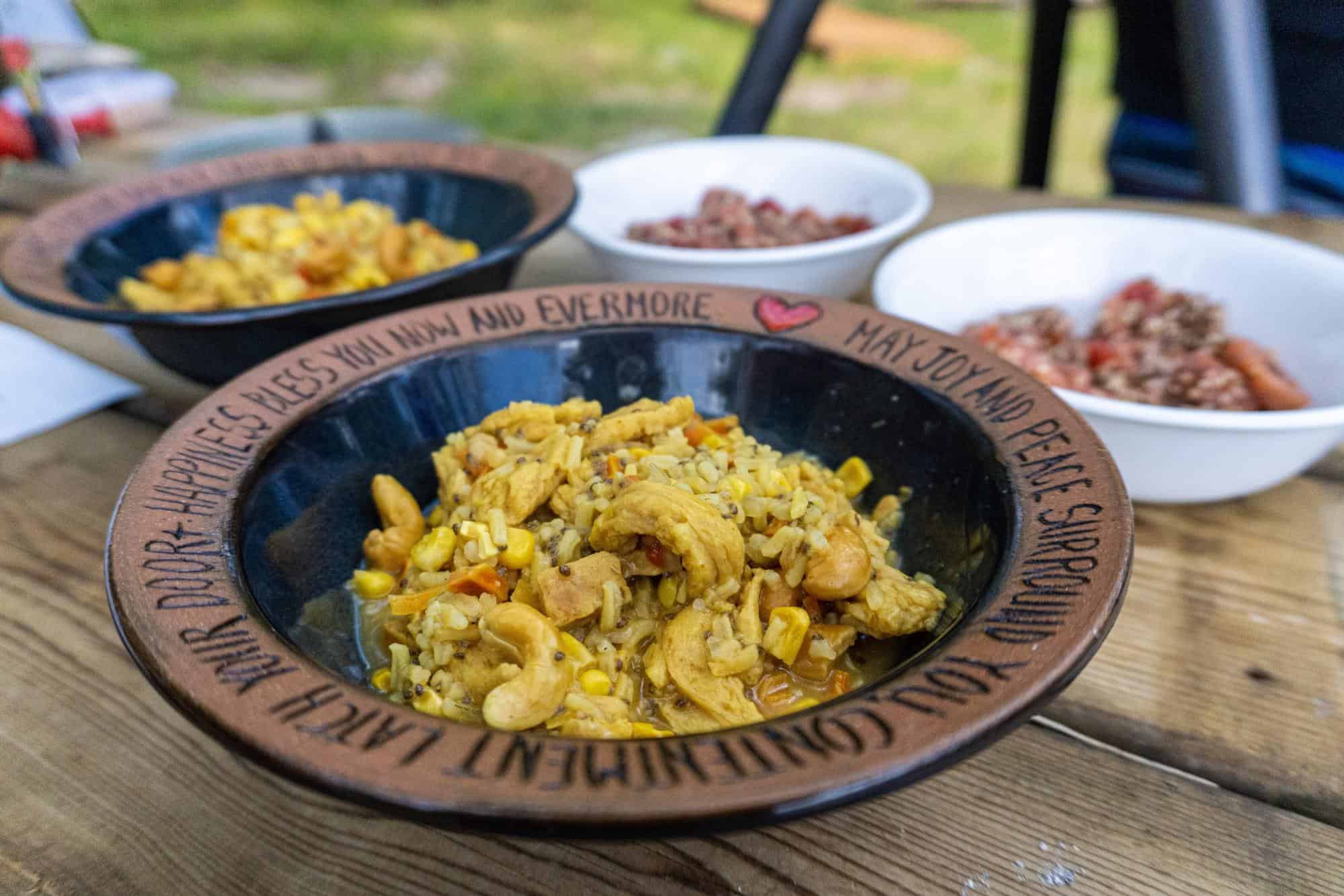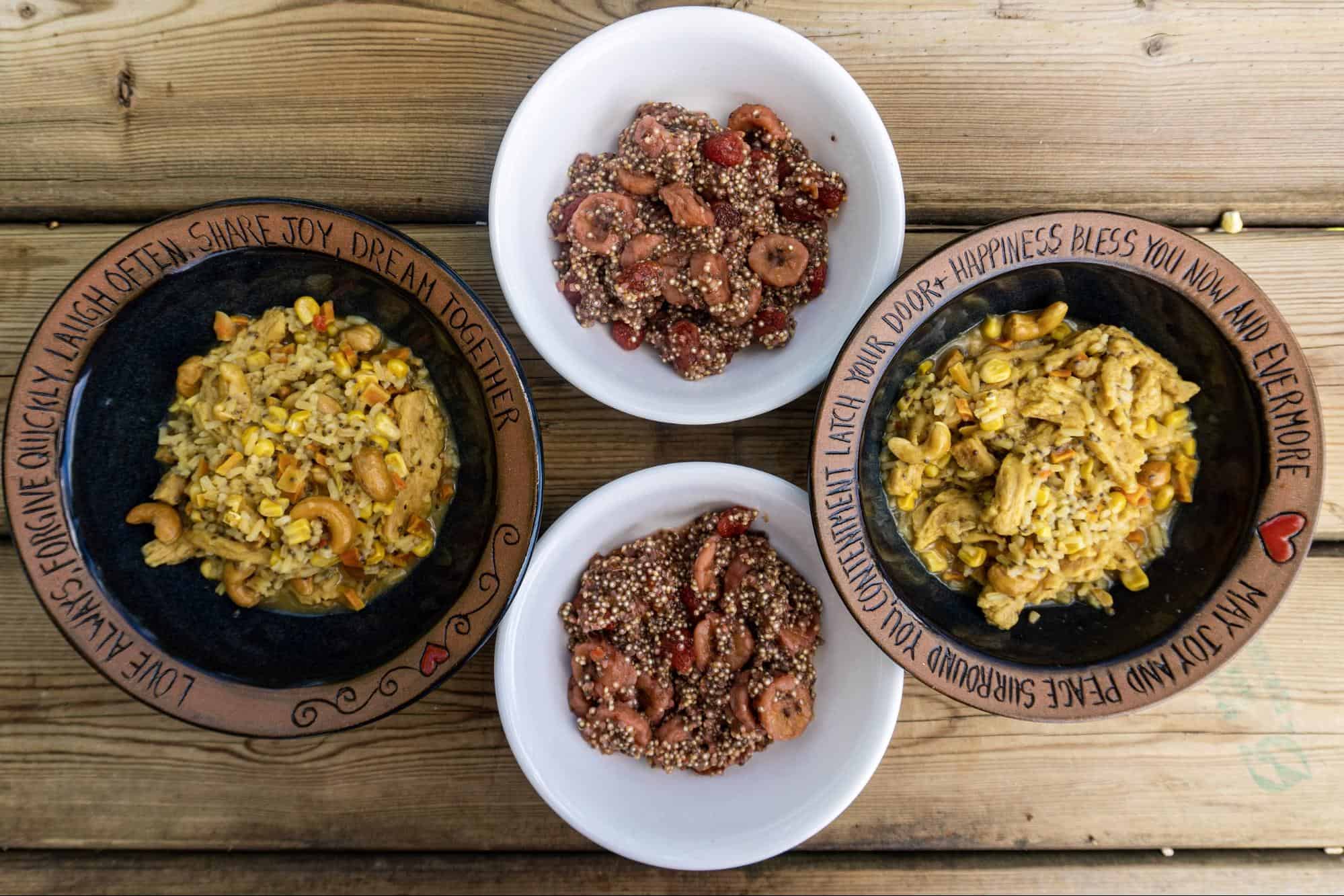This summer CIM is producing a cooking show, “Cooking in Motion,” a series of video tutorials on how to cook a variety of recipes while camping in the outdoors. Each episode of the show features Sarah, the CIM Adventure Coordinator, and a CIM community member “guest chef,” cooking together in the outdoors while having open conversations about diabetes, as well as other topics near & dear to their hearts! Follow along on the CIM socials and blog to watch each episode and find the recipes we try!
On episode 5 of Cooking in Motion I was joined by CIM Executive Director Jen Hanson. Jen invited Hank, our film wizard, and me to stay on beautiful Edward’s Island in Port Loring, Ontario, where Jen and her husband Derek own a cottage property and are in the midst of building a sleeping bunkie, an outhouse, and eventually, a brand new cottage. In this episode we decided to showcase two different dehydrated/freeze dried recipes that are typical meals we eat on a CIM backpacking trip like the Adventure Trek. The two meals we decided to make were: 1. Quinoa Breakfast Bowl, and 2. Cashew Curry. Both of these meals use dehydrated or freeze dried ingredients that need to be rehydrated in water before (or during) cooking, and are ultra-lightweight for backpacking trips.
To start, we set up one of the CIM WhisperLite stoves to cook the quinoa and the dehydrated bananas and strawberries for the breakfast bowl. Towards the end of the cooking time we added in chia seeds to help absorb excess water and thicken the mixture up. Once the quinoa was cooked and the strawberries and banana were well hydrated, it was time to serve! We each added brown sugar although you could add any number of your preferred toppings.
To make our dinner meal, we again set up the stove to boil some water and added in our parboiled rice and freeze dried vegetable mixture. We also added spices, soy curls, freeze dried chicken, and cashews.
While that was cooking, I talked to Jen about dehydrated/freeze dried meals for backpacking with diabetes, and about our good friends at Briden Solutions who generously donate the bulk of the freeze dried food we take on our Adventure Treks.
S: So Jen, did you want to tell us a little bit more about freeze-dried food?
J: Sure Sarah! So freeze-dried food has become a really important part of CIM’s tripping experiences of the years, especially on our Adventure Team Treks. That’s not just because it’s nutritious and delicious, but because it’s ultra-lightweight and can pack down really really small. That becomes really important when we have to conserve backpack space. When we’re traveling with a group of people with T1D, a lot of our backpack space is taken up by diabetes supplies, and emergency equipment, and all the other things we need for camping, so we don’t have the luxury of having a ton of space for food.
So freeze-dried food is food that has had all the moisture sucked out of it, which makes it really lightweight and easy to carry and easy to rehydrate on the trail.
Since 2016 when we started running the Adventure Team trips, we have been working with a company called Briden Solutions, a family-run business out of Calgary, AB. They have been amazing to us; they have donated freeze-dried food for each of our trips so that we can stay healthy and full of calories and have the energy that we need to be hiking long days. So Briden Solutions has helped us and has opened up our eyes to the amazing things you can make with freeze-dried food.
J: Most of our menus are created by recreating the packaged meals that you can get somewhere like Mountain Equipment Co-op or even Canadian Tire. But we are making them in bulk. We buy these cans of each individual ingredient (from Briden Solutions), and we can measure them out to put into our recipes.
We also order these soy curls online. These were introduced to us by our friend and vegan chef, Paul Vugteveen, and we love them! They have become an amazing alternative and a really great option to keep meals as one pot meals and also cater to people who are vegan or vegetarian or are eating alternate diets.
If you don’t need this much freeze dried food, you can also get smaller amounts at the bulk barn or in any bulk food store. TVP or textured vegetable protein is another alternative that is a great way to add protein that is meatless to your meals.
S: Awesome, thank you for sharing all of these trip food secrets with us today Jen!

Once our Cashew curry was finished cooking it was time to taste test each recipe…the verdict? They were delicious and made us nostalgic for the trail!
I have rated this recipe in a few different categories to give an overall assessment of it for cooking while camping:
Level of difficulty
Rated on a scale from 1-3 with 1 being very easy (beginner camp chef), and 3 being difficult (advanced camp chef).
Verdict: I rate each of these meals a 1/3 for level of difficulty. There is no simpler meal to make on trip than a dehydrated/freeze dried one because you just have to add your food to water and cook it! Freeze dried meals are also very forgiving if you’ve added too little or too much water- it is nearly impossible to ruin one of these meals.
Tastiness
Rated on a scale from 1-10 with 1 being not so delicious, and 10 being AMAAAZING.
Verdict: I rate each of these recipes an 8/10 for tastiness. Although these meals may not be as involved or have as many cooking steps or ingredients as some of the other recipes we’ve made, both of these recipes are DELICIOUS on the trail! You can also customize these recipes with as many spices and flavour boosters as your taste buds desire. Whether or not that’s because we are always hungry on the trail, I’ll let you decide!
Camping Convenience Factor
Rated on a scale from 1-5 with 1 meaning the recipe is very inconvenient for camping (for example ingredients are not easy to pack, difficult to cook over a camp stove/fire, time consuming, etc.), and 5 meaning the recipe is very convenient for camping (ingredients are lightweight/easy to pack, easy to cook on a camp stove/fire, etc.)
Verdict:
I rate both of these meals a 5/5 for camping convenience factor. These recipes use dehydrated or freeze dried ingredients which are ultra-lightweight and keep well for a long time, and they are incredibly simple to cook. The only challenge sometimes is knowing where to find freeze dried food for packing your camp meals.
Final Verdict:
Both of these recipes make delicious and healthy meals that are perfect for ultra-lightweight packing for backpacking trips. You can customize the ingredients and portions however you like, and they can be made anywhere from your cottage, to the top of a mountain pass.
Check out the recipes below!
Jen’s Freeze Dried Camping Meals
Ingredients
Quinoa Breakfast Bowl:
- 1 cup quinoa
- 2 cups water (plus a little extra)
- Dried bananas (to taste)
- Dried strawberries (to taste)
- Brown sugar (to taste)
- Chia seeds (to taste or ~2-4 tablespoons)
Cashew Curry:
- 2 cups rice
- 4 cups of water (plus extra)
- Cashews (to taste or ~ 1 cup)
- 1 cup Soy curls (and/or freeze dried chicken)
- Freeze dried corn (to taste or ~1 cup)
- Dehydrated carrots (to taste, or ~1/2 cup)
- Freeze Dried Onion (to taste, or ~ ½ cup)
- ~4 tsp Curry powder or to taste
- ~2 tsp garlic powder or to taste
- 2-4 tbsp chia seeds
Directions
Quinoa Breakfast Bowl
In a pot on a stove or over a campfire, add quinoa, water, and dried fruit. Bring pot to a boil and let cook until quinoa has opened up (you will see spirals on the inside). Once the quinoa is cooked, remove the pot from heat and let it sit covered- you can also add the chia seeds at this step to help absorb excess water.
Once the water is absorbed, serve the quinoa, chia seed, and fruit mixture into bowls and add whatever toppings you desire such as brown sugar, cinnamon, nuts, seeds etc.
Cashew Chicken Curry
In a pot on a stove or over a campfire bring 4 cups of water to a boil. Once boiling, add in the rice, cashews, soy curls, dehydrated veggie mixture, and spices into the pot. For this meal we roughly used a 1:1 ratio of water to rice/veggie mix (which was approximately 4 cups), but we also added a little extra water to help rehydrate the vegetables. If you add too much you can always pour off the extra water later.
Stir mixture and cook until rice is done or for approximately 15 minutes. Add the chia seeds in the last 5 minutes of cooking time to help absorb water.
Serve in bowls!
Dietary Options
Both of these meals are vegan and gluten-free. For the Cashew Curry you can use alternative protein options like the soy curls we used, or TVP (textured vegetable protein), or if you would like meat you can add freeze dried chicken/beef etc.
For Bolusing
The carb count for each of these dehydrated/freeze dried meals is approximately 60 grams of net carbs per serving.
Each serving of the Cashew Curry is also approximately 750 calories. On our backpacking trips we are aiming to consume around 5000 calories a day.
*If you are making these while camping/being active in the outdoors, keep in mind that you may need to reduce your basal or bolus insulin.
A Word on Covid-19
In the making of this series our CIM staff and wonderful “guest chefs” were very cautious in regards to COVID-19. All of the participants in these videos and our film team had been carefully isolating at home with minimal contact with others prior to filming, and we felt safe expanding our small social circles to include the few individuals involved in making Cooking in Motion. All participants took precautions before, during, and after cooking/filming, including hand washing and sanitizing, using separate cooking/eating plates and utensils, and maintaining 6 ft social distancing when possible. CIM staff have continued to remain at home and away from others as much as possible, and wear masks whenever in public places. We take our staff and community members’ health seriously and we will continue to monitor the situation, and take precautions throughout the production of this series.

